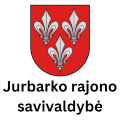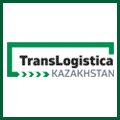This time the guest of JŪRA MOPE SEA magazine is Markku MYLLY, Master Mariner, former Executive Director of the European Maritime Safety Agency, Expert in Maritime Issues and Principal Advisor, also CEO of MyNavix consulting company.
‘Mr Mylly, your presentation ‘Seaports’ Rocky Road Towards Automation – Steps Needed to Unlock Real Value’, delivered at Ports 4.0 Conference, organised by the Baltic Ports Organisation, drew everyone’s attention. What was the message that you wanted to deliver to the Baltic ports? It would be great to share it with those, who have not attended the conference – not just the Baltic ports.’
‘My message to the Baltic Sea area and the ports in this region was that investments in new port facilities, especially in container terminals, are huge. Not all of the ports in the Baltic are entitled to serve the big ocean-going container vessels and the majority of the Baltic ports should concentrate on feeder services, i.e. smaller feeder vessels. This also means more reasonable investments in the ports and terminals in the Baltic area.
Many ports in the Baltics are relatively small, serving the industry nearby and this model has been prevailing for a long time. We will see consolidation and merging of nearby ports. This phenomenon is already happening on a smaller scale, but I believe that in the near future this consolidation and mergers of ports will increase.’
‘Researchers of human development claim that the species of sapiens has already experienced cognitive revolution, agricultural revolution, scientific revolution and has entered into the times of Industry 4.0 revolution. Each of the previous revolutions has had a significant impact on the development of humanity and the face of our planet. What changes will the Industry 4.0 revolution bring to the Earth?’
‘Industry 4.0 is going to have a remarkable impact on societies, industry, transport etc. AI (artificial intelligence), IoT (internet of things) and VR (virtual reality) will have a huge impact on our everyday life very soon. Machine to machine with extended information flow and big data usage will change the industrial production. 3D-printing will change the manufacturing processes, Industry 4.0, especially when coupled with machine learning and artificial intelligence, will substantially change conditions for workers. Old jobs will disappear, new jobs will emerge and many respective tasks will shift from manual labour to automation. Robotics will increase and we will see new factories with minimum amount of human labour force in the future.’
‘How will the products of the new revolution – such as the internet of things, global digitisation, metadata processing, nanotechnology, artificial intelligence and many others that we don’t even have names for – affect production, trade, the climate and our lives?’
‘I already described this development in my previous comment and I believe automation, usage of big data, robotics and new ICT solutions will change the production of traditional industry dramatically. These new technologies might have an impact on industrial production – changing the traditional industry to serve the modern needs of the society. This is already happening, for example, in Finland in forest industry, which is developing new timber products, i.e. biofuels, other bioproducts, intelligent packing and labelling materials etc.’
‘Let’s take a look at the maritime sector, where increasing mega vessels require greater depths and more complex port infrastructure. In your opinion, where is the limit to this vessel growth and is it possible to predict it? What is the point of building these enormous ships in Asia that can enter only a few ports in Europe?’
‘My personal opinion is that we are on the upper limit in ship size when it comes to tankers, bulkers, cruise vessels and container ships. The biggest vessels in the world are already so huge in size that they can be served only by a limited amount of ports due to vessel size. Ports’ technical infrastructure sets limits to vessel size and the water depth in the ports and port estuaries. If the vessel size continues to grow from the present maximum, the investments needed to accommodate and serve even bigger vessels will become very challenging technologically and economically as well. The economical advantage is not increasing anymore and this sets a threshold for building bigger vessels.’
‘What is the future of the smaller ports, such as the Baltics? Is there a possibility that they could be swallowed by the more powerful neighbours in the near future? The press is already sharing concerns that in 2024 the universal cargo complex, currently under construction at the Russian port of Primorsk, will be ready to handle about 70 million tonnes of cargo, taking away all the Russian transit cargo from the Eastern Baltic ports – Estonia and Latvia.’
‘I already mentioned the role of the smaller ports in the Baltics and I believe that we will have small ports in the Baltic region in the future as well. We will see consolidation and mergers (as I have already mentioned), but I do not have a silver bullet to determine the extent of these mergers.
Russian ports will continue to develop and we have already seen the development of Primorsk, Vysotsk, St Petersburg, Bronka, Ust Luga and Kaliningrad. Using only their national ports for Russian import and export shipments has been their interest and long-term plan and this is understandable.’
‘Many are also concerned about the Chinese intentions to purchase cargo terminals in Europe. To what extent can they be realistic and reasonable?’
‘Chinese are actively building their network of ports and dryports in Europe. We have experienced China’s investment in Africa and Chinese investment on the global scale has increased very rapidly. Africa is the third-largest destination for Chinese investment behind Asia and Europe. So, at this point, Europe is a very attractive destination for Chinese investments and we have already seen Chinese interest in many ports, especially container terminals. The Chinese either buy a part of a big port’s container facility or a minor container port, which they want to develop further.
It seems that the Chinese have their own agenda in this respect and the last eight years have seen an exemplary shift in Chinese investments in Europe. Chinese foreign direct investment (FDI) in the European Union (EU) has increased by almost 50 times in only eight years, from less than $840 million in 2008 to a record-breaking $42 billion (35 billion euro) in 2016, according to Rhodium Group statistics.
China’s interests in Europe are manifold – from access to new technologies, high-tech assets, and knowledge, to broader commercial access into the European market and entrance to the third markets (such as the United States) via European corporate networks.
In Greece, the Chinese state-owned enterprise giant COSCO Holdings Company has acquired a 100 percent stake in the port of Piraeus, Europe’s largest passenger and big container port. With Piraeus now considered China’s ‘gateway into Europe’, shipping times for Chinese goods have been shortened by one week.
Looking at this strategy it looks logic and reasonable – and the majority of this strategy has been realized by Chinese Government money.’
‘What are the prospects of the New Silk Road – One Belt, One Road? Could it be that the Chinese initiative, enthusiastically launched several years ago, is currently experiencing a low tide?’
‘Geopolitically, China decided a long time ago that security was a too expensive an offer to make. Instead, this new superpower may offer connectivity.
The One Belt One Road project already has $1 trillion of projects underway, including major infrastructure works in Africa and Central Asia. China is expanding its connectivity policy to all continents, if not directly, then indirectly.
The private sector will leverage the potential and increase investments proportional with the improvements in infrastructure and processes. If successful, the reboot of the ancient Silk Road will without doubt bring additional growth opportunities to business and nations, and also provide better access to no less than 66 % of the world’s middle class, which is expected to live in China by 2030.
So, the One Belt Road is a very ambitious long-term project. It is obvious that this long road will have ups an owns, but, to my understanding, China’s political commitment is very firm and supportive to complete this ambitious project.’
‘If the ideas of the New Silk Road will, in fact, be implemented, what effect will it bring to the global shipping and port operations?’
‘As I have commented previously, China is very committed to the New Silk Road or One Belt One Road project and if we think of the influence of this project to shipping, it will indeed have a significant impact on trade patterns in the longer term.
The One Belt One Road project is expected to reshape the international trade and shipping industry by opening several new international trade routes and upgrading several others.
One of the most serious aspects of the Belt and Road Initiative is a change in the pattern of global ownership and control of infrastructure which facilitates new trade movements. The control of such infrastructure from Chinese interests will increase the Chinese imports/exports in/out of these countries.
Some of the effects of this massive project on shipping are going to be positive since the demand for shipping services is expected to increase, while other developments might have an adverse effect in shipping markets.’
‘Thank you for your answers.’
Interwiewed by Zita Tallat-Kelpšaitė




.jpg)






